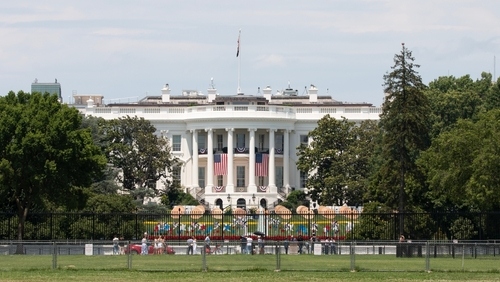US Dollar retraces from two-year high after PMI data, geopolitical uncertainty prevails

- US Dollar Index declines below 108.00 on Friday, November 22.
- DXY retreats from 2-year high despite strong S&P PMI data; profit-taking and China's stimulus package contribute to pullback.
- Fed officials remain cautious with Barkin citing inflation risks and Williams indicating potential rate reduction.
In Friday's session, the US Dollar Index (DXY) declined slightly after reaching a new two-year high amidst geopolitical instability. However, strong S&P PMI data reinforced the US economy's relative resilience, supporting the DXY's gains.
The US Dollar's pullback was attributed to profit-taking and positive economic indicators from China, including a rate reduction and a comprehensive stimulus package. Consequently, the DXY retraced from above 108.00, stabilizing around 107.50.
The DXY, which values the Greenback against a basket of major currencies, maintains a bullish bias, driven by solid economic data and a less dovish Federal Reserve (Fed) stance. Despite the retreat, the uptrend remains intact, with investors now expecting a gradual pace of rate cuts. Technical indicators suggest potential consolidation, but the overall bullish momentum remains strong.
Daily digest market movers: US Dollar holds gains after PMI data, profit-taking
- The US Dollar Index dipped after reaching a new two-year high due to geopolitical instability and profit-taking.
- The DXY found support from strong S&P PMI data indicating the US economy's resilience.
- Positive economic news from China, such as a rate cut and stimulus package, contributed to the DXY's pullback.
- On the data front, the US S&P Global Composite PMI rose by 1.2 points to 55.3 in November's flash estimate.
- The S&P Global Manufacturing PMI improved marginally from 48.5 in October to 48.8 but remains in contraction.
- The S&P Global Services PMI rose notably from 55 to 57, indicating continued expansion.
DXY technical outlook: Index consolidates after reaching 108.00
The DXY has shown signs of easing after reaching 108.00 due to profit-taking by investors. Technical indicators, particularly the Relative Strength Index (RSI) and Moving Average Convergence Divergence (MACD), indicate overbought conditions, suggesting a possible slight correction in the index. Despite this, the index remains supported by strong economic data and hawkish Fed rhetoric, maintaining an overall bullish trend. The uptrend now faces resistance around 108.00 and support at 106.00-105.00, with profit-taking and risk-off sentiment potentially leading to a pullback or consolidation in the short term.
US Dollar FAQs
The US Dollar (USD) is the official currency of the United States of America, and the ‘de facto’ currency of a significant number of other countries where it is found in circulation alongside local notes. It is the most heavily traded currency in the world, accounting for over 88% of all global foreign exchange turnover, or an average of $6.6 trillion in transactions per day, according to data from 2022. Following the second world war, the USD took over from the British Pound as the world’s reserve currency. For most of its history, the US Dollar was backed by Gold, until the Bretton Woods Agreement in 1971 when the Gold Standard went away.
The most important single factor impacting on the value of the US Dollar is monetary policy, which is shaped by the Federal Reserve (Fed). The Fed has two mandates: to achieve price stability (control inflation) and foster full employment. Its primary tool to achieve these two goals is by adjusting interest rates. When prices are rising too quickly and inflation is above the Fed’s 2% target, the Fed will raise rates, which helps the USD value. When inflation falls below 2% or the Unemployment Rate is too high, the Fed may lower interest rates, which weighs on the Greenback.
In extreme situations, the Federal Reserve can also print more Dollars and enact quantitative easing (QE). QE is the process by which the Fed substantially increases the flow of credit in a stuck financial system. It is a non-standard policy measure used when credit has dried up because banks will not lend to each other (out of the fear of counterparty default). It is a last resort when simply lowering interest rates is unlikely to achieve the necessary result. It was the Fed’s weapon of choice to combat the credit crunch that occurred during the Great Financial Crisis in 2008. It involves the Fed printing more Dollars and using them to buy US government bonds predominantly from financial institutions. QE usually leads to a weaker US Dollar.
Quantitative tightening (QT) is the reverse process whereby the Federal Reserve stops buying bonds from financial institutions and does not reinvest the principal from the bonds it holds maturing in new purchases. It is usually positive for the US Dollar.




